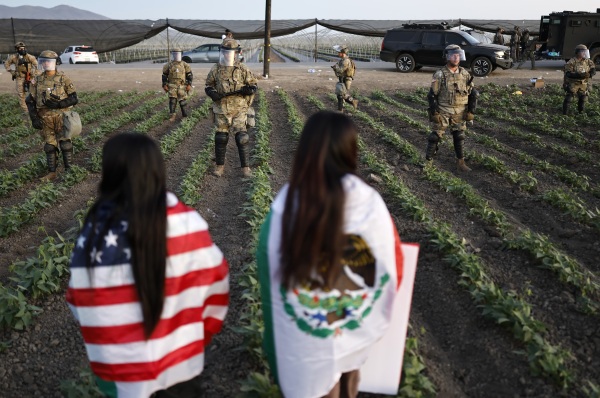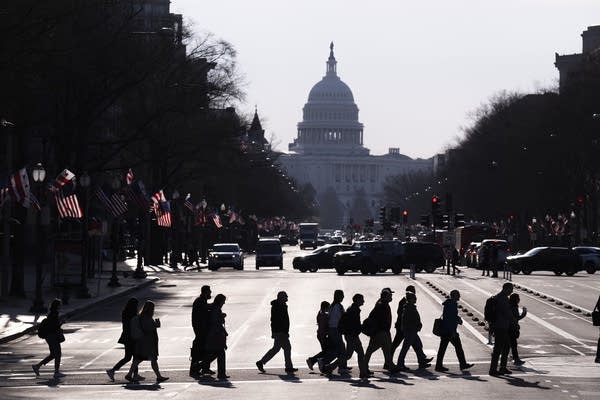A report claims left-wing terrorism is rising. The data paints a complicated picture
Description
 <figcaption class="figure_caption">
<figcaption class="figure_caption">The assassination of right-wing activist Charlie Kirk has turbocharged the conversation — and fears — around political violence in the U.S. And, more than perhaps any other recent high-profile incident, it has fed claims that far-left extremists are primarily responsible for the worsening environment.
"From the attack on my life in Butler, Pennsylvania, last year, which killed a husband and father, to the attacks on ICE agents, to the vicious murder of a health care executive in the streets of New York, to the shooting of House Majority Leader Steve Scalise and three others, radical-left political violence has hurt too many innocent people and taken too many lives," President Trump said, just hours after Kirk was killed.
So far, no information has been disclosed that clearly links the man charged with Kirk's killing to leftist groups or movements.
Still, the Trump administration's claim that domestic terrorism largely comes from the left has flown in the face of data. Federal law enforcement authorities and non-governmental researchers have, for years, found the far right to be the most "lethal and persistent" domestic terrorist threat. Among examples they cite are racially motivated mass killings at an African American church in Charleston, S.C., in 2015, a Walmart in El Paso in 2019, and a grocery store in Buffalo, N.Y., in 2022; and the 2018 massacre at a Jewish synagogue in Pittsburgh.
But a recent report from the Center for Strategic and International Studies (CSIS) posits that a reversal took place in the first half of 2025. It analyzed roughly 30 years of data and found that between Jan. 1 and July 4 of this year, the number of far-left terrorist plots and attacks outnumbered those from the far right.
"My hope was to bring some data to the discussion and to try to use the data to understand possible reasons left wing terrorism might be increasing and right wing terrorism might be decreasing," said Daniel Byman, director of the Warfare, Irregular Threats and Terrorism Program at CSIS. Byman co-authored the study with Riley McCabe, an associate fellow in the same program.
But the report itself has ignited a firestorm of debate within the field of counterterrorism and extremism research. For many, the conclusions are premature. And ultimately, critics say it does more to reveal the complications around collecting and analyzing data on domestic terrorism than it does to clarify the current state of the problem itself.
A claim that left-wing terrorism is rising — but with caveats
The CSIS study drew from a variety of sources that included information from the Armed Conflict Location & Event Data project, the Anti-Defamation League and media reports. Because there is no public, official, unified and comprehensive database of domestic terrorism incidents in the U.S., researchers who wish to analyze trends are required to assemble their own data sets.
"There are a lot of ambiguities for really anyone who's trying to code terrorist attacks," said Byman. "Coding" refers to a process by which analysts apply sorting criteria to an incident to determine how it should be categorized. In the CSIS analysis, for example, there was the initial requirement to determine whether incidents even qualify as terrorism.
"If someone draws a swastika on a synagogue, do you say that's antisemitic terrorism? We tended to focus on risk of life, so that sort of violence would not count," Byman explained. "In a more political context, the arson attacks on Tesla would not count because there doesn't seem to have been any attempt or intent to kill individual people."
Additional coding happens after analysts compile their lists of domestic terrorism incidents. In this case, Byman and McCabe were interested in focusing on cases that, in their view, could be attributed to right-wing or left-wing motivations. During the first six months of 2025, they coded five instances as left-wing terrorism, and one as right-wing terrorism.
But Byman said the significance of these findings has caveats.
"Even the five [left-wing terrorist incidents] we get for the first half of 2025 — let's say that pace continues and it's 10 — that's a small number compared to right-wing terrorism when it was at its peak in recent years," Byman said. "And so the increase to me has to be taken in context."
In fact, Byman said that while several news outlets ran with headlines that highlighted a rise in left-wing plots and attacks, that was perhaps the less remarkable finding.
"The decline in right-wing attacks is actually much more striking," he said.
The single act that the CSIS study coded as right-wing terrorism during the first half of 2025 was the assassination of Minnesota state representative Melissa Hortman and her husband, and the shooting of Minnesota state senator John Hoffman and his wife. Byman surmises the drop-off in frequency of right-wing incidents may be due to a feeling that the Trump administration has operationalized policy objectives, such as increased immigration enforcement, that previously animated violence on the right.
But several experts within the field of counterterrorism and extremism research have raised concerns about the methodology, conclusions and timing of the study.
"Five is a really low case number"
For Amy Cooter, deputy director at the Institute for Countering Digital Extremism, the numbers found in the CSIS study are too small to support any robust conclusions.
"Five is a really low case number to try to make any kind of inference from and try to say that we're having a major increase in any kind of problem," said Cooter, who co-authored a critique of the report. "Compared to historical data, almost any increase in left-wing violence is going to look like a big jump."
By contrast, Byman and McCabe's count of right-wing terrorism tallies 144 incidents between 1994 and 2000. That suggests a rate of 12 incidents per six-month period, more than twice what they found in their analysis of left-wing terrorism during the first half of 2025.
"The primary thing that I'm worried about with that report is how some people are already interpreting that as projecting a real threat from the left, both through the rest of 2025 and through an undefined future period as well," Cooter said. "Not only are five incidents still objectively really small, we know historically we have seen a greater number of incidents that are more reasonably coded as right-oriented."
Beyond the distortions that may come from small numbers, others have raised additional red flags about the study.
"There have been methodological concerns that have been aired with that product," said Jacob Ware, research fellow at the Council on Foreign Relations and an adjunct professor at Georgetown University. "I think part of the firestorm has been people pointing out individual cases that are included or are not included."
The study of domestic terrorism is highly subjective
From decisions about whether a particular incident should be coded as terrorism, to discerning a perpetrator's ideology or politics, whether those beliefs ultimately motivated the violence, and the extent to which mental health issues factored in — researchers may draw different conclusions. In many cases, those determinations simply cannot be made until court cases begin, and evidence relating to the suspect's background and planning are publicly available. As a result, there's surprising variance when it comes to analyzing domestic terrorism.
"There's a lot of subjectivity that goes into this," Cooter said. "Basically, it's up to teams of researchers deciding their own criteria for what counts or doesn't [in deciding what goes] into a particular dataset."
For those reasons, Cooter and Ware said they have different assessments about some of the incidents that the CSIS study included — and excluded — in its analysis.
"We really need to get statements or justifications, motivations from perpetrators," said Ware. "I don't think we























